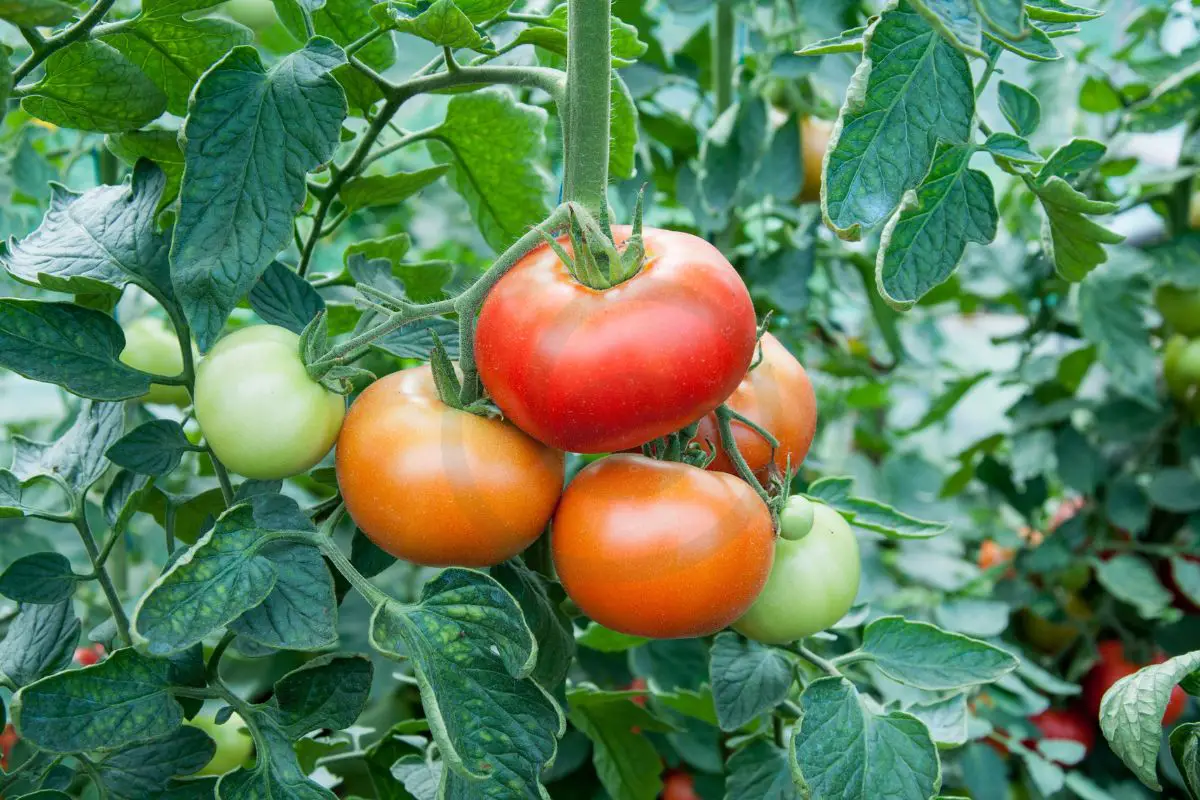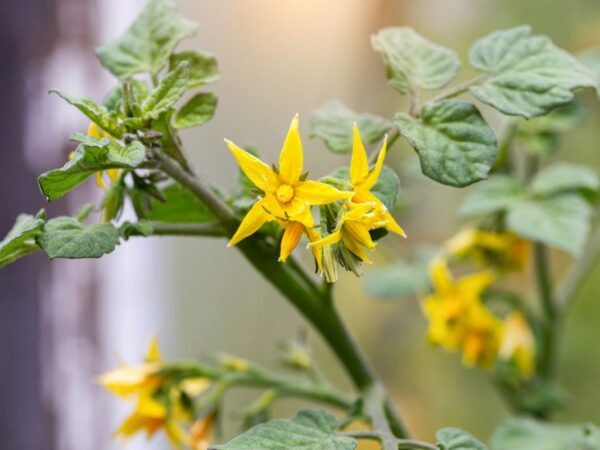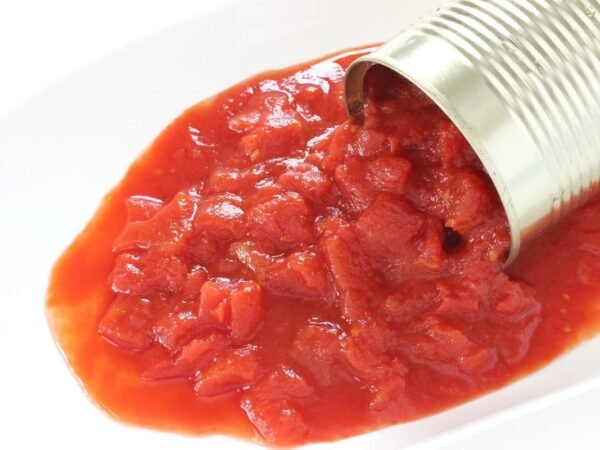"When to Put Tomato Plants Outside" is a crucial question for any gardener eager to ensure the success of their tomato crop. Fear not, as I'm here to guide you through this pivotal decision-making process. Timing is key when it comes to transplanting your tomato plants into outdoor soil, and understanding the optimal conditions will set you up for a bountiful harvest.
To determine the right time to put your tomato plants outside, consider the following factors:
- Frost risk: Wait until all danger of frost has passed in your region.
- Soil temperature: Ensure that the soil temperature is consistently above 55°F (13°C) for optimal root growth.
- Weather forecast: Choose a period of stable, mild weather to minimize stress on the young plants.
- Plant maturity: Transplant your tomato seedlings outdoors when they have developed sturdy stems and a few sets of true leaves.
- Harden off: Gradually expose your plants to outdoor conditions over the course of a week before transplanting to prevent shock.
By following these guidelines, you'll confidently know when to put your tomato plants outside, setting them up for healthy growth and abundant yields. Remember, patience and proper timing are essential for a thriving tomato garden.
Trust me, there's more to learn about maximizing your tomato harvest! From choosing the right varieties to proper watering and fertilization techniques, there's a wealth of information to explore on your journey to becoming a tomato-growing expert. Stay tuned for additional insights and tips to help you cultivate your best crop yet.
Key Takeaways
- Timing Matters: Plant tomatoes outside after the last frost date for your region to ensure optimal growth and fruit production.
- Proper Preparation: Get your tomato plants ready for transplantation by hardening them off gradually and acclimating them to outdoor conditions.
- Planting Tips: When planting tomatoes, bury them deep in the soil, leaving only the top leaves above the surface for better root development.
- Container Gardening: Consider growing tomatoes in containers if space is limited, ensuring adequate drainage and nutrient-rich soil.
- Water Wisely: Water tomato plants consistently, aiming for even moisture levels to prevent issues like blossom end rot.
- Feed Appropriately: Fertilize tomatoes regularly with a balanced fertilizer to promote healthy growth and abundant fruiting.
Understanding Tomatoes
Growth Cycle
Tomato plants go through various growth stages, starting from seed germination to flowering and fruit development. Understanding these stages helps in providing appropriate care. The time taken to grow from planting to harvesting varies based on the tomato variety and environmental conditions. Choosing the right growth cycle is crucial for planning your gardening activities effectively.
Varieties
Different tomato varieties are available to suit various regions and preferences. Exploring these options allows you to select the most suitable type for your garden. Determinate tomatoes are ideal for those looking for a more controlled growth pattern, while indeterminate types offer continuous harvests. Bush or dwarf varieties are perfect for limited spaces like container gardening due to their compact size and manageable growth habits.
Climate Needs
Tomatoes thrive in specific climate conditions that support healthy growth and maximum yield. Identifying the climate requirements such as temperature and sunlight is essential for successful cultivation. Temperature fluctuations can impact plant development, affecting flowering and fruit set. Adequate sunlight exposure is crucial for photosynthesis and overall plant health, ensuring robust growth and flavorful fruits.
Optimal Planting Time
Temperature Guidelines
Monitor soil and air temperatures to determine the best time for planting tomatoes. Ensure that the soil temperature is at least 55°F before directly seeding the plants. Once the soil reaches a minimum of 60°F, it is suitable for transplanting seedlings.
Frost Dates
Determine the last expected spring frost date in your region before planting tomatoes outdoors. It is crucial to wait until all danger of frost has passed to prevent damage to young tomato plants. Consider the specific frost dates for different regions and adjust your planting schedule accordingly.
Day Length
Understand how day length impacts tomato plant growth and fruit production. Take into account the daylight requirements necessary for healthy fruit development. Adapt your planting times based on the natural day length in your specific region.
Preparing for Transplantation
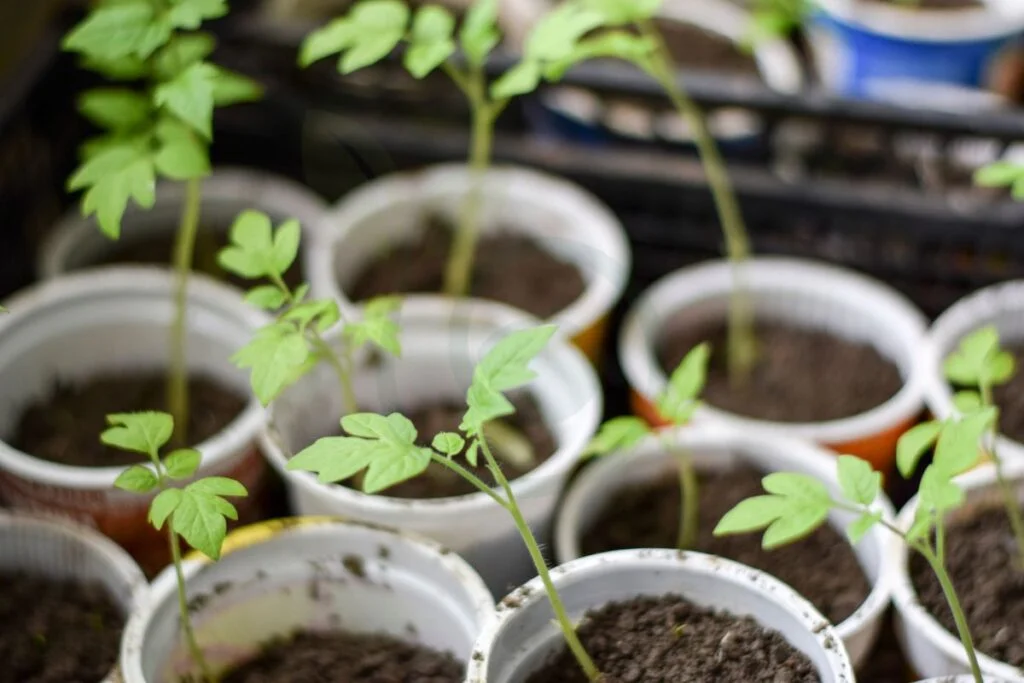
Soil Preparation
Prepare the soil adequately by ensuring it is well-draining and rich in nutrients. Consider using soil amendments to boost plant growth and yield.
Hardening Off
Implement a gradual hardening off process for seedlings before transplanting them outdoors. Transition the seedlings gradually from indoor to outdoor conditions.
Container Selection
Choose suitable containers for growing tomatoes, especially determinate types for container gardening. Ensure proper drainage in the containers to prevent waterlogging.
Planting Techniques
Spacing
Determining the optimal spacing between tomato plants is crucial for their well-being. Avoid overcrowding to allow proper airflow and prevent diseases. Take into account the mature size of the tomato variety to space them adequately.
Depth
Planting tomato seedlings at the correct depth is essential for their growth. Ensure that the roots are well-covered but not buried too deep in the soil. Understanding the significance of proper planting depth promotes healthy root development.
Watering After Planting
Establishing a consistent watering routine after planting tomatoes is key to their survival. Water deeply but infrequently to encourage roots to grow deeply into the soil. Regularly monitor soil moisture levels to avoid both overwatering and underwatering, which can harm the plants.
Growing in Containers
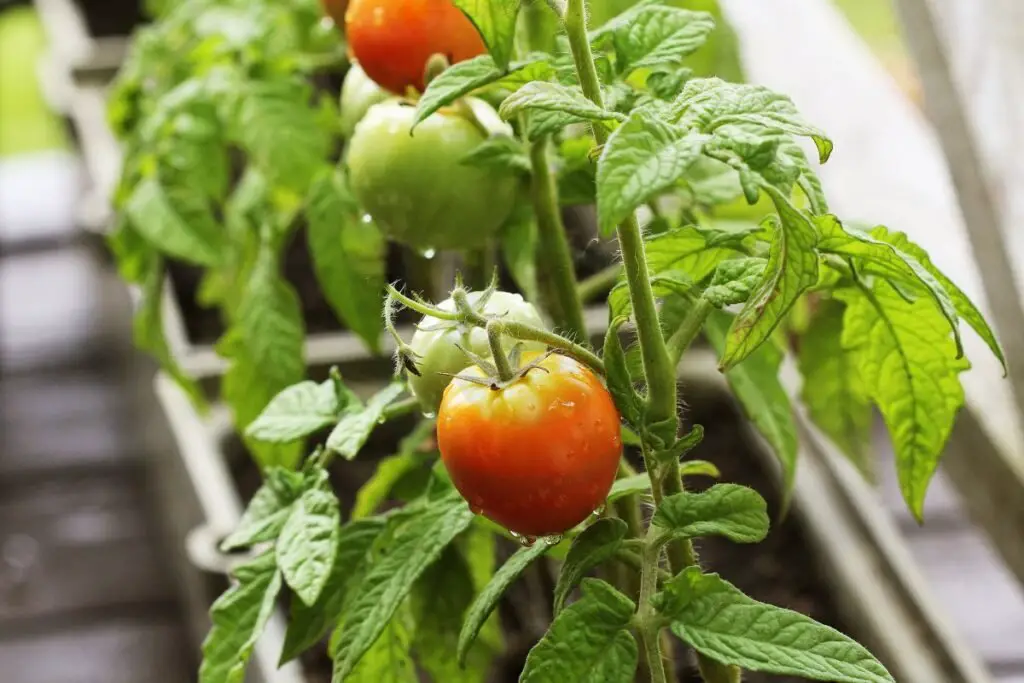
Pot Size
When planting tomatoes in containers, it's crucial to select appropriate pot sizes. Consider the root system and growth habits of the tomato variety you are growing. Ensure that the pots are large enough to accommodate the mature plants as they develop.
- Choose pot sizes based on the specific tomato variety you are growing.
- Larger pots help prevent root binding and provide ample space for healthy growth.
Soil Mix
For container-grown tomatoes, selecting a well-draining soil mix is essential. Opt for a mix that allows excess water to drain out easily, preventing waterlogging that can harm the plant roots.
- Add organic matter like compost or aged manure to improve soil fertility.
- Avoid using compacted soil that restricts root development and hinders nutrient uptake.
Watering Needs
Understanding the watering requirements of tomato plants is key to their successful growth. Adjust your watering frequency based on weather conditions and the stage of plant growth.
- Provide consistent moisture to prevent issues such as blossom end rot.
- Monitor soil moisture levels regularly, especially during hot and dry periods.
Watering Practices
Frequency
Establish a watering schedule that suits the specific needs of your tomato plants. Monitor soil moisture regularly by checking the top few inches of soil. Adjust the watering frequency based on the plant's requirements and environmental conditions.
To prevent drought stress, it is crucial to adjust the watering frequency during hot and dry periods. Tomatoes are particularly sensitive to fluctuations in soil moisture levels. Therefore, keeping a close eye on the weather and plant condition is essential.
Techniques
Learn about various watering techniques that can benefit your tomato plants. Consider using drip irrigation systems or soaker hoses for more precise and efficient watering. These methods deliver water directly to the root zone, reducing water wastage and minimizing moisture-related diseases.
Implementing mulching around your tomato plants can help conserve soil moisture and reduce evaporation. Mulch acts as a protective layer that retains moisture in the soil, ensuring that your plants receive a consistent water supply. Mulching helps suppress weeds, which can compete with tomatoes for water and nutrients.
Fertilization Strategies
Type of Fertilizer
Select the right type of fertilizer for tomato plants to ensure optimal growth and fruit production. Opt for balanced fertilizers containing essential nutrients like nitrogen, phosphorus, and potassium. Avoid over-fertilization, as it can disrupt nutrient levels and harm plant health.
- Choose balanced fertilizers
- Avoid over-fertilization issues
- Ensure essential nutrients for healthy growth
Application Schedule
Develop a fertilization schedule tailored to the needs of tomato plants. Apply fertilizer at key growth stages, such as during transplanting and flowering, to support overall plant development. Consider using slow-release fertilizers for a steady supply of nutrients over time.
- Create a customized fertilization plan
- Apply fertilizer strategically at crucial growth phases
- Opt for slow-release options for consistent nutrient availability
Pruning Essentials
When to Prune
Prune tomato plants after they have developed a few sets of true leaves to ensure optimal growth. This typically occurs when the plants are around 6-10 inches tall. Avoid pruning too early, as this can hinder their development.
How to Prune
To prune effectively, start by removing suckers - the small shoots that grow between the main stem and branches. This helps redirect energy towards fruit production and improves airflow around the plant. Selective pruning is key to maintain plant vigor and health.
Pest and Disease Management
Common Pests
Tomato plants are vulnerable to common pests like aphids, hornworms, and whiteflies. These pests can cause significant damage. Watch for signs of infestations, such as holes in leaves or wilting plants. Early detection is crucial for effective pest control. Employ integrated pest management techniques, including beneficial insects and organic pesticides.
Preventing Diseases
To safeguard tomato plants from diseases, adopt preventive measures like proper spacing and ventilation. Crop rotation helps reduce disease pressure in the soil. Regularly inspect plants for symptoms of common tomato diseases like blight and wilt. Early detection is key to preventing widespread infections.
Harvesting and Storing
Harvest Time
Determining the optimal time to harvest tomatoes is crucial for flavor and texture. Look for signs of ripeness like vibrant color and slight firmness. Gently harvest tomatoes to prevent any damage to the delicate fruit.
Storage Methods
Exploring various methods for storing harvested tomatoes ensures long-term enjoyment. Consider canning, freezing, or drying tomatoes based on your preference. Store tomatoes in a cool, dry place away from direct sunlight to extend their shelf life.
Final Remarks
By now, you have gained a comprehensive understanding of how to nurture your tomato plants successfully. Remember the optimal planting time, the importance of proper preparation, and the significance of watering and fertilizing adequately. Embrace pruning as an essential practice and stay vigilant against pests and diseases. Lastly, savor the fruits of your labor by harvesting at the right time and storing your tomatoes correctly.
Now that you are equipped with the knowledge to cultivate thriving tomato plants, it's time to put these insights into action. Head to your garden, apply these techniques, and watch your tomato plants flourish. Share your newfound wisdom with fellow gardening enthusiasts and continue to expand your horticultural skills. Your journey to becoming a master tomato grower starts now!
Frequently Asked Questions
When is the best time to put tomato plants outside?
The optimal time to transplant tomato plants outdoors is after the last frost date in your region. This typically falls in late spring or early summer. Ensure the soil temperature is consistently above 60°F for successful growth.
How should I prepare my tomato plants for transplantation?
Before moving your tomato plants outside, gradually expose them to outdoor conditions over a period of one to two weeks. This process, known as hardening off, helps plants adjust to sunlight, wind, and temperature variations, reducing transplant shock.
What are the recommended planting techniques for tomato plants?
When planting tomatoes outdoors, dig a hole deep enough to cover two-thirds of the stem. Remove lower leaves and plant at an angle if the stem is leggy. Water thoroughly after planting and provide support structures like cages or stakes for growing vines.
Can I grow tomato plants in containers?
Yes, tomatoes can thrive in containers as long as they have sufficient space, good drainage, and receive at least six hours of sunlight daily. Choose a large container with rich potting mix and consider determinate varieties for compact growth habits.
How should I manage pests and diseases affecting my tomato plants?
Monitor your tomato plants regularly for signs of pests like aphids or diseases such as blight. Use organic insecticidal soap or neem oil for pest control and practice crop rotation to prevent disease buildup in the soil. Remove affected leaves promptly to prevent spread.
Image Source: Paid image from CANVA

